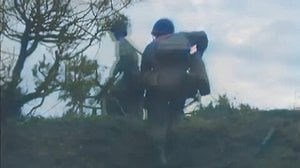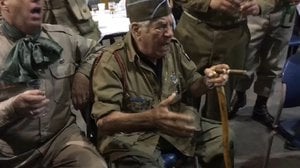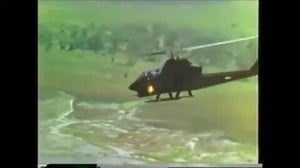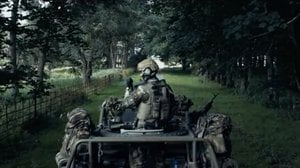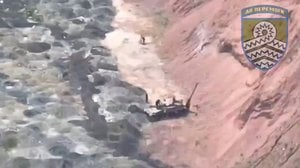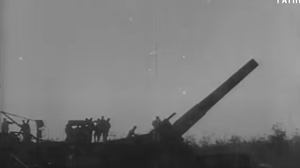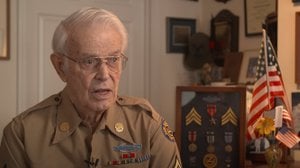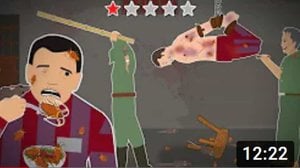
Archival Footage, Battle of the Bulge, 1944
Published 8 months ago
Archival footage from the final act of the Battle of the Bulge, documenting American infantry and armor as they expel German troops from the Belgian town of St. Vith. G.I.s march through snow-covered pines, moving forward to their assault positions, and Sherman tanks plow paths through the snow. Soldiers advance past battle-scarred buildings and into villages reduced to rubble, and a cut scene shows German prisoners being processed. Towards the end of the video, we catch a glimpse of an American .30 caliber machine gun in action and the relentless progress of the Shermans. Slogging through the snow looks like it was cold, exhausting, miserable existence.
The Battle of the Bulge, which lasted from 16 December 1944 to 25 January 1945, was the single largest battle fought by American forces in Western Europe during World War II. The German Ardennes Offensive was an effort to pierce the Allied front, splitting the American and British armies, and then to drive an armored spearhead all the way to the sea, seizing the vital port city of Antwerp. With the allies in disarray and strategically critical real estate in his possession, Hitler thought that he could bring the bring the Anglo-Americans to the negotiating table, where he could convince them to set aside their demands of unconditional surrender and join him in his struggle against the Soviets.
The German assault slammed into American lines, taking many commanders by surprise, and driving a deep bulge into the allied front. Some units were overwhelmed, but some American units engaged in fierce delaying actions at places like St. Vith and Bastogne, while shortages in men, materiel, and fuel further hampered the German effort. These factors disrupted the German timetable and slowed their advance, and while the German legions caused significant damage, they failed to reach their objectives. The American units defending St. Vith withdrew to avoid encirclement, ceding the town to the Germans, while the 101st Airborne Division was surrounded at Bastogne, but manage to hold out until relieved by Patton’s Third Army shortly after Christmas. St. Vith was recaptured in the subsequent counteroffensive, some of which can be seen in the footage above.
Belgium today is a small but complicated country. Divided into French and Dutch speaking regions, with some small German-speaking enclaves in the eastern part of the country, Belgium has long been a battlefield for the great powers of Europe, and monuments to that history can be found at places like Bastogne, Ypres, and Waterloo. St. Vith has recovered from the war, healed its scars, and today presents itself as a small idyllic town, with little shops, cafes, and restaurants. Bastogne has healed as well, though it has a slightly more commercial feel, and it markets its martial past. A monument to the Americans who defended the town and the Belgian civilians who died there stands next to a museum which attempts to tell the story of the conflict and to place the events in context. Some of the foxholes defended by the paratroopers of Easy Company, 1st Battalion of the 506th Parachute Regiment have been preserved, and the quiet beauty of the pine forest offers a contrast to the violence which occurred there so long ago.
About the Author
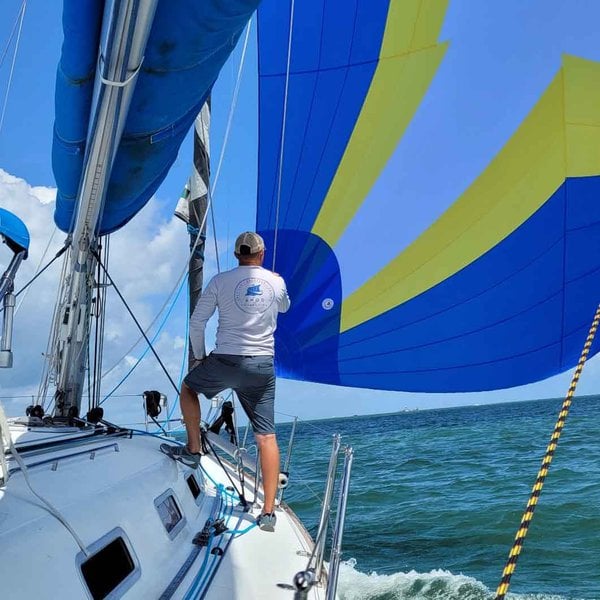
Cam
Cam served as an infantry officer in the Marine Corps, deploying to the Horn of Africa and participating in combat operations in Iraq. He currently works in the maritime industry and in the defense sector as an instructor of combined arms planning and operations. An avid sailor, Cam founded and directs Triumph Sailing, a nonprofit that supports veterans and first responders through adventure and fellowship on the water. Triumph Sailing is preparing for the 2024 season of sailing on Galveston Bay and in the Gulf of Mexico. You can support the mission and next year's sailing season at Tri-Sail.Org.


